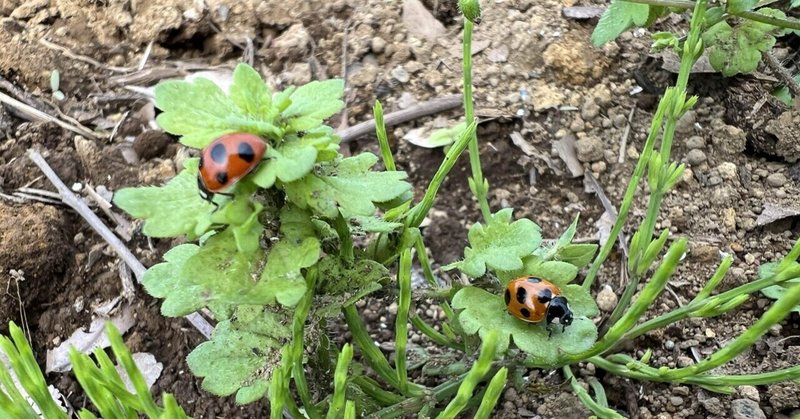
【Koyomi】 May 2, 2024
Various Things About the Seasons|Ladybug
季節のあれこれ|テントウムシ
Today, let's delve into the fascinating world of ladybugs, a common yet intriguing insect. These tiny creatures capture our attention with their distinctive spots and vibrant colors.
今日は、点や鮮やかな色で私たちの注意を引く、一般的でありながら興味深い昆虫であるテントウムシの魅力的な世界について掘り下げてみましょう。
Seasonal Appearance
Ladybugs are primarily observed from April to November. However, during the peak heat months from July to early September, they seemingly disappear, taking a break from the heat. This phenomenon is linked to their lifecycle and environmental adaptations.
季節的な出現
テントウムシは主に4月から11月にかけて観察されます。しかし、7月から9月上旬の最も暑い月間には、暑さから一時的に姿を消します。この現象は、彼らの生活サイクルと環境への適応に関連しています。
Brief Lifespan
A ladybug's life is notably short, lasting about two months. They grow from eggs to adults in approximately 20 days and, once matured, continue to lay eggs for about a month until their life cycle completes.
短い寿命
テントウムシの寿命は約2カ月と特に短いです。卵から成虫まで約20日で成長し、成熟すると約1カ月間卵を産み続け、その生涯を終えます。
Hibernation and Estivation
Depending on when they hatch, ladybugs can overwinter as larvae or adults. They often hibernate in groups, mixing species, in various shelters like cracks in buildings, the underside of deadwood, or beneath stones. During the peak summer, in absence of their primary food source—aphids—ladybugs undergo a period of estivation, retreating to cool places like under fallen leaves to escape the heat and conserve energy.
冬眠と夏眠
孵化の時期によって、テントウムシは幼虫または成虫で越冬します。建物の隙間、枯れ木の裏側、石の下など、さまざまな避難所で種を混ぜながら集団で冬眠することがよくあります。真夏、主な食料源であるアブラムシが不在の時には、テントウムシは夏眠を行い、落ち葉の下など涼しい場所に退避して熱から逃れ、エネルギーを節約します。
この情報を基に画像を生成します。
この記事が気に入ったらサポートをしてみませんか?
